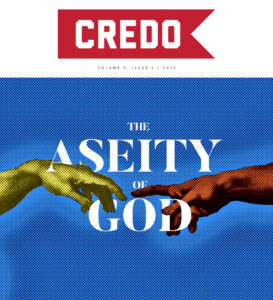In keeping with the Baker Exegetical Commentary on the New Testament (Baker Academic), Doug Moo, a first-rate evangelical NT scholar, has provided us with an excellent treatment of Paul’s letter to the Galatians. Moo writes with clarity, interacts with various theological positions with charity, and supports his arguments from the grammar and the context of Galatians. Moo rightly sees the gospel as “the best single unifying theme of the letter” (32). His outline thus is centered around the gospel: the truth (1:11–2:21), the defense (3:1–5:12), and the life of the gospel (5:13–6:10).

Because Moo (rightly, in my view) favors the South Galatian hypothesis and links the Jerusalem visit of 2:1–10 with the famine relief visit of Acts 11:27–30, he suggests that Paul wrote the letter in AD 48 (prior to the Jerusalem Council) and thus Galatians is the earliest letter of Paul (2–18). With many commentators, Moo (19–31) argues the reason Paul needed to emphasize the gospel is because the “agitators” at Galatia were likely teaching that Paul’s gospel was a human invention, could not make a person a child of Abraham, and could not overcome the power of sin. Their “gospel,” which Paul says is no gospel at all (1:7), included a return to life under the law of Moses, including circumcision (5:3; 6:12–13). Hence, Paul’s response was to assert that his gospel had a divine origin (1:11–24), was accepted by the Jerusalem leadership (2:1–10), and promised true membership in the family of Abraham (3:7–4:7, 21–31) and the presence of the Spirit who empowers for righteous living (5:13–6:10). In reality, the agitators were trying to gain disciples (4:17) and flee persecution (6:12), probably from the Jews (393).
Galatians and the New Perspective of Paul
One of the strengths of the commentary is that Moo does not pit salvation history against anthropology. Salvation history is key to reading Galatians rightly, for Paul’s argument hinges on the coming of Christ and the obsolescence of the law of Moses. Nevertheless, contra the so-called “New Perspective on Paul,” Moo argues Paul’s problem with the law of Moses wasn’t merely that it excluded Gentiles from the people of God but that it couldn’t bring righteousness and life due to human sin. That is to say, Paul’s problem with the law of Moses owed to humanity’s inability to do what is right in the sight of God. For Moo, the phrase “works of the law” refers not exclusively to “boundary markers” but doing all that the law requires. Israel’s problem, even as seen in the OT, was a failure to keep the law—hence the promise of the new covenant (173–76).
The question presented by the Antioch incident (2:11–14) concerned whether Gentile Christians needed to come under the law of Moses in order to be granted full membership within the new covenant community (143–44). But the answer could be sustained only by answering the more fundamental issue of how a person could be justified in God’s sight—hence the anthropological words “person,” “flesh,” and “grace” in 2:15–21, which Moo labels “the central rhetorical point of the letter” (153). For Moo, then, justification is not equivalent to but related to covenant membership: justification is “God’s pronouncement of the righteous status that is granted to all who truly belong to the people of God” (179). Hence, because of human sin, a person can be justified by faith alone and not by their efforts. Because of the contrast between human believing and human doing, Moo argues for the objective genitive in the pistis Christou debate: faith in Christ is the means by which a person is justified (38–48, 241). Because of the coming of Christ who in his death had brought to an end the sacrificial system of the law of Moses, a return to the law of Moses meant that perfect obedience was necessary in order to be justified (323–25). The agitators’ gospel in effect, then, relied on human effort and resembled semi-Pelagianism (30–31).
I also appreciated Moo’s analysis of the law of Moses as transcended by the law of Christ. Moo argues that the entire law of Moses was brought to an end in the coming of Christ. The entire law of Moses was brought to an end in the coming of Christ. Share on X Moo rightly takes the phrase “under the law” to refer not to the law’s curse but to the law’s authority (35–37), and that which is destroyed in 2:18 is the law itself (166). The law wasn’t evil—3:19 cannot be read as though God had nothing to do with the giving of the law—but it still brought death and curse. Strikingly, even though Paul saw the law as from God, he closely associates it with the stoicheia tou kosmou, the material elements of the universe that are part and parcel of pagan religion (260–63; cf. 4:3, 9). Hence, the law of Christ (6:2) is distinct from the law of Moses and, in light of Jesus’ teachings and his exemplary life and death, “is a succinct way of summarizing the ethical guidance given to new covenant believers” (37, 376–78).
Justification: Already, Not Yet, or Both?
My only major concern with Moo’s approach is his analysis of the time of justification in Galatians. He summarizes, “Overall, then, justification language in Galatians has a timeless and, if anything, future-oriented focus” (60). Moo does not deny that justification has an already/not yet dimension, wherein God’s eschatological declaration of righteousness is definitively applied to a person when they trust in Christ. Nevertheless, according to Moo, the situation at Galatia suggests Paul wasn’t concerned about whether the Galatians had experienced initial justification. He was more concerned about whether they would “maintain” their status so as to be justified on the last day. Hence, justification in Galatians is either timeless (2:16, 21; 3:8, 11, 24) or future (2:17; 5:4–5), and only once is it clearly present (3:6; see 60–62, 327–28).
In response, I agree that Paul points the Galatians to their future justification (especially in 5:5), and that the present tense is likely timeless in 2:16 and 3:11. But I disagree that the situation at Galatia mandates that Paul argue exclusively for future justification. Indeed, Paul and the agitators likely agreed that justification has an eschatological character. The point of disagreement was the basis (the death of Christ) and the means (faith, not works) of justification. One of the fundamental ways Paul argues for his gospel of righteousness by faith alone in Christ alone is through the story of Abraham, who was justified by faith and not by works (3:6–14). Abraham’s justification, which was a present reality, is paradigmatic for the Galatians’ experience (3:1–5). Paul used the Abraham narrative precisely to show that the Galatians were already justified by faith, and therefore there was no need to add works as a basis for their righteousness. Their hope for future righteousness was based on their present reception of it by faith. Practically, one way we should encourage Christians who are tempted by legalism is to remind them of the basis for their righteousness on the Judgment Day. But we should also encourage those same Christians by reminding them of the basis for their righteousness right now by their faith-union with Christ, which, if believed, will kill legalism at the root.
As with many volumes in the BECNT series, this commentary will be a standard for some time to come. The educated Christian will find the commentary accessible in its layout and style; pastors will find it useful in its treatment of the grammar and theology of the text; and scholars will find it stimulating in the interaction with scholarship as seen in each subsection’s copious textual notes and footnotes (e.g., 216–23).


